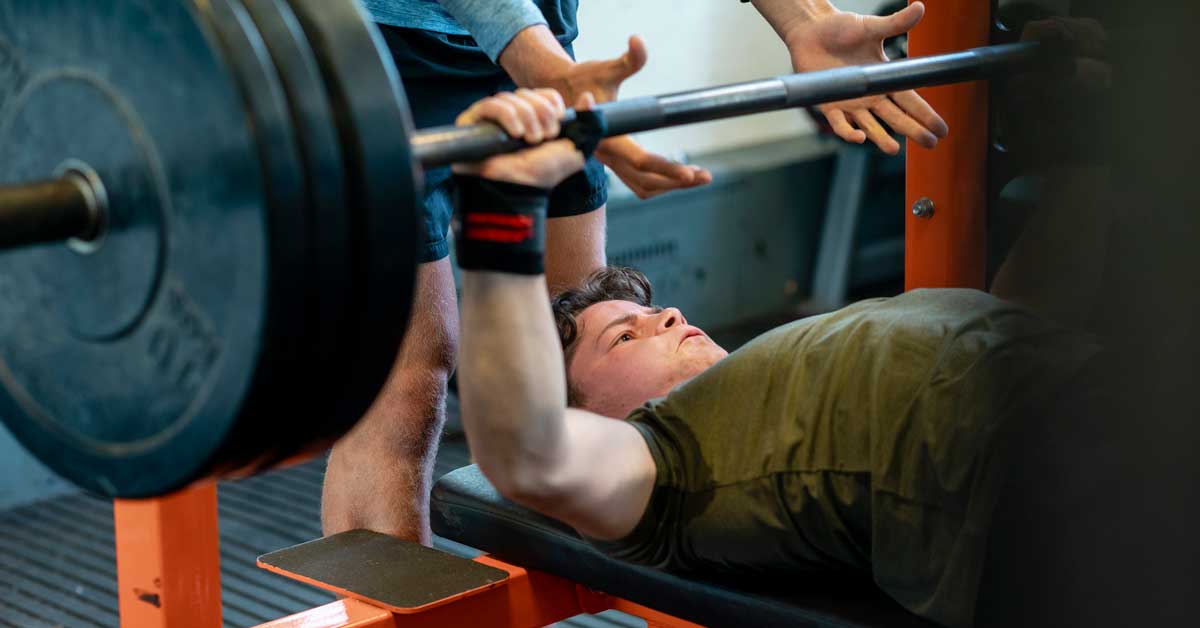Brandon Pigg is a second-year master’s student in the University of Memphis’s exercise, sport, and movement sciences program and current Assistant Performance Coach at Madison Academy. He also operates as a private coach under his brand name, Pique Strength & Conditioning. His postgraduate aspirations include multisport high school strength and conditioning.
Freelap USA: What are the highest priorities in training middle school athletes?
Brandon Pigg: First and foremost, they must be able to safely navigate a weight room and training session. If they cannot execute use of the weight room safely, none of the tips or considerations given in this article matter. We do not want to shut down progress made in the weight room because someone got hurt.
The next overarching priority is to prepare our middle school athletes to be skilled and competent enough to train well in a high school environment. We do not have the time or luxury to spoon-feed freshmen in a high school training session. We teach literacy and competency in our “big rock” lifts, movement patterns, and athletic qualities like jumping and sprinting, so they are familiar with the expectations and coaching cues in a faster-paced environment. We are more concerned with movement skills than contractile element adaptations at this part of our development plan.
Freelap USA: How do you balance rigid technical strength training with “free play” with middle school athletes?
Brandon Pigg: Coaches must understand that there needs to be a balance between rigid environments of training and free play due to the maturity level of a middle schooler. We must balance wanting to reach the goals that are discussed in the previous question and allowing them to have some “free play” opportunities. I believe the tradeoff is worth it in the long run. Sometimes, expending energy by just goofing off with friends can have a positive return on the training program.
I approach this by limiting the time we spend in one particular environment. For example, we block off our training sessions into 20-minute increments (60-minute session total). The first 20-minute block is spent on a holistic warm-up that covers all movement patterns and prepares the body for training. The second block has a true lifting focus to acquire lifting skills. The third block is designated for free play, whether that is on a playground, in small-sided games, or in something they are passionate about playing.
A major part of this model is packaging the last block to the kids as a reward. This helps to keep our priorities for the training session and drive the kids to take the beginning of the session seriously. Although the free play is programmed into the plan, it is delivered to them in a manner that is received as “extra.” If the kids are not focused at a level that is satisfactory, we continue the session with lifting skills and other resistance training methods. I have found this to consistently keep our reps at a quality level even though we only spend roughly 20 minutes doing so.
Freelap USA: When it comes to programming for middle schoolers, we must keep logistics, environment, and attention span in mind. What is your approach to these variables, and can you give an example(s)?
Brandon Pigg: As I mentioned in the previous question, the training is broken down into three separate time blocks to entice the athletes to focus. As far as logistics are concerned, I must set up training where I can see everything that is happening in my coaching view, no matter if there are three things happening at once or just one. We must keep safety our first priority.
Second, I am not a fan of “busy work” per se, but I understand that some middle schoolers do not have the attention span to watch and rest as their other teammates are training. The best-case scenario is to give our middle school athletes a task to do between main sets (some call this a superset) that is simple and safe, but effective for what we are trying to accomplish.
An example of this is a prone “iron man” exercise to engage the lats while we are training the trap bar deadlift. The movement is safe, simple to execute, and helps stack a feeling that is consistent with the positioning in the deadlift.
I noticed a major difference in training quality when using their environment and attention span to my advantage. Originally, our session would consist of traditional strength training one block at a time. I noticed I was able to keep their focus for about 20 seconds of meaningful tension per set before their attention span began to drift. I shifted to a station approach with smaller groups and found I could gain up to 50 seconds of meaningful tension per set before they were distracted by their peers. This approach has allowed me to get more meaningful work done with them.
Freelap USA: How can you progress the training of middle school athletes? How much variability do you use?
Brandon Pigg: I do not want our middle school athletes to feel like they are just surviving in the weight room—I want them to thrive in it. We progress to more advanced positions, such as unilateral variations, and use time as our main progression variable, not load (isometrics and eccentrics). We cover the fundamentals of all our positions of training so they will have a baseline of familiarity with whatever we have on our training card during high school training sessions.
Freelap USA: What are your top three return-on-investment exercises for middle school athletes?
Brandon Pigg: The first exercise is trap bar deadlift. We can get the most output from this exercise with the least amount of coaching. Second on the list is any variation of a row. I believe training the proper mechanics of a row will transfer to many other movements and exercises that they will use down the road. Lastly, skipping and sprinting are non-negotiable for middle school athletes to develop pure coordination and proprioception purposes that will transfer to sport.






